Spartacus led the biggest slave rebellion Rome had ever seen — but his motivations may not have been so noble.

LL/Roger Viollet/Getty ImagesDennis Foyatier’s marble statue of Spartacus at the Louvre Museum in Paris.
Spartacus not only led a slave revolt with tens of thousands of soldiers in the first century B.C. but repeatedly defeated Rome in battle. Still, his motivations remain up for debate. Was he a rebel hero — as modern legend holds — a reckless rabble-rouser, or both?
Everything we know about Spartacus comes from second- or even third-hand sources, ancient historians who were born decades after his death in 71 B.C. And since ancient times, the man has been thoroughly mythologized by everyone from Stanley Kubrick to Bertolt Brecht.
Let’s explore the Spartacus’s life and mythology, from his Thracian youth to his enslavement as a gladiator to his revenge on the ancient Romans, all the way up to modern-day interpretations of his slave rebellion.
The Early Life Of Spartacus
Before the rebel leader marched his men up and down Italy and relentlessly crushed the Roman opposition, he was but a boy. According to ancient historians, he was born in Thrace, which encompassed parts of modern-day Bulgaria, Greece, and Turkey. After the Third Macedonian War in the second century B.C., many Thracians were taken to Italy and sold into slavery.
Spartacus was one of those Thracians.

Wikimedia CommonsThe Roman Empire as of 100 B.C., around the time when Spartacus was born.
According to Greek historian Appian of Alexandria, who lived mainly in the second century A.D., Spartacus had once been a Roman soldier but was taken prisoner and sold to a gladiator ring in Capua, near the city of Naples.
In 75 A.D., nearly 150 years after Spartacus’s death, the Roman historian Plutarch wrote that Spartacus stood out long before his slave rebellion:
They say that when he was first taken to Rome to be sold, a snake was seen coiled round his head while he was asleep and his wife, who came from the same tribe and was a prophetess subject to possession by the frenzy of [the god of ecstasy] Dionysus, declared that this sign meant that he would have a great and terrible power which would end in misfortune.
According to Plutarch, Spartacus “not only had a great spirit and great physical strength, but was, much more than one would expect from his condition, most intelligent and cultured, being more like a Greek than a Thracian.” (As Livius notes, this last part was a cliché of ancient writers. Any non-Greek or non-Roman who had done something special “was said to be more intelligent than other barbarians.”)
In Capua, Spartacus was forced under the torturous tutelage of Lentulus Batiatus, who kept his gladiators jam-packed in close quarters until they had to fight in the ring.

Wikimedia CommonsThe amphitheater in Capua, where gladiators like Spartacus were forced to train and fight.
And so Spartacus decided to revolt.
Spartacus: The Gladiatorial Slave Leads A Revolt
According to Plutarch, the slave rebellion that became the Third Servile War began with 78 people and a few dozen kitchen knives. In 73 B.C., this group of invigorated gladiators decided to risk everything to regain their freedom.
After overcoming their guards and escaping to the Italian countryside, the men encountered a caravan of wagons. They’d struck gold: the wagons were filled with weapons. The men seized both arms and transport and headed to the slopes of Mount Vesuvius, plundering villages, splitting the spoils, and amassing more men along the way.
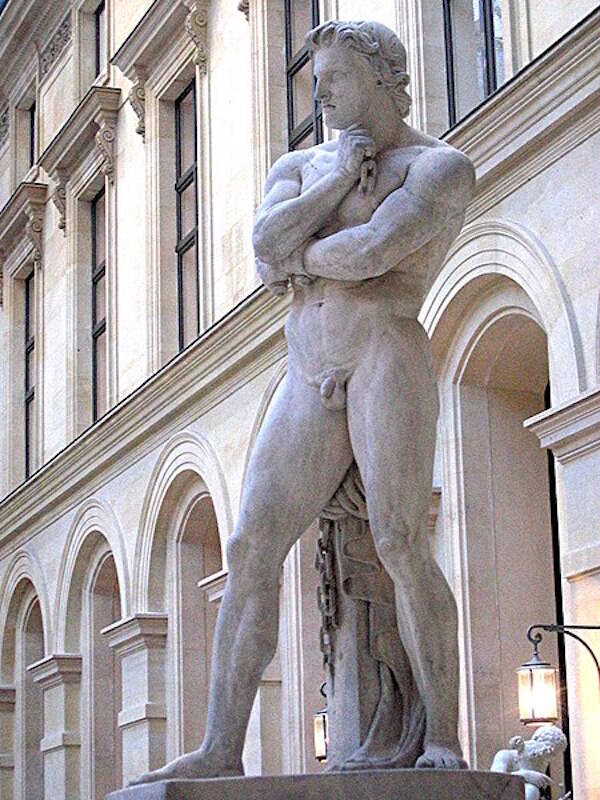
Wikimedia CommonsA statue of Spartacus at the Louvre Museum in Paris.
Rome, meanwhile, didn’t seem to think that a rag-tag bunch of slaves presented any serious threat. They sent a praetor, Gaius Claudius Glaber, to the Bay of Naples to deal with the affair, and didn’t even give him a proper legion of soldiers. Instead, Glaber conscripted men en route.
Glaber and his 3,000 soldiers blocked the only path Spartacus and his men could use to flee their spot on a hill. The rebels were surrounded by “sheer precipitous cliffs,” according to Plutarch.
So instead of trying to charge at the Roman army, the former slaves got crafty: Using vines and tree branches, they made ladders that could reach the plains below. Without Glaber and his men noticing, they all made it down safely, ran around to the other side of the Romans, and defeated them in a surprise attack.
They then went on to defeat another praetor, Publius Varinius, and his army of 2,000.
Their victories rallied slaves and others from across the region. What began as a mere quest to become free men suddenly turned into a gathering of volunteer soldiers. Slaves and free folk they encountered, from shepherds to herdsmen, joined Spartacus and his men to defend themselves against any tyrannical entity desperate for subjects.
This grassroots army quickly grew to more than 70,000 people.
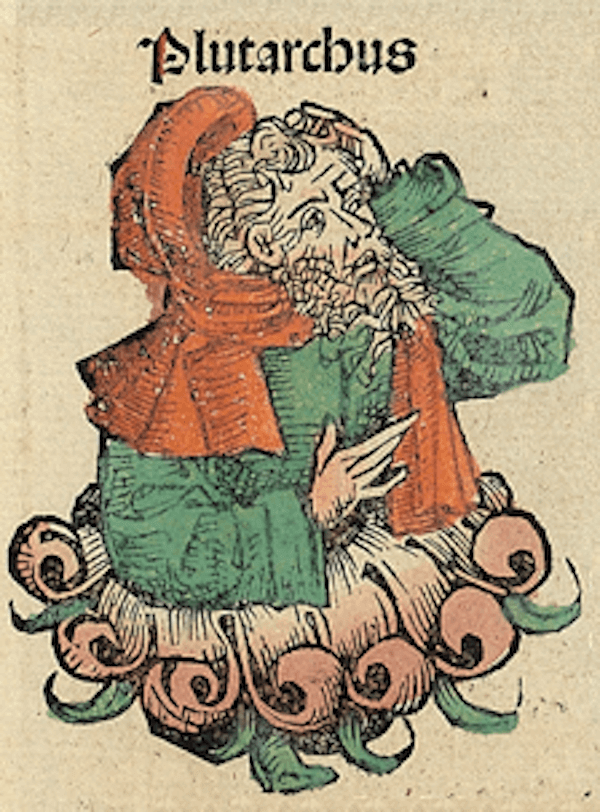
Wikimedia CommonsThe Greek biographer and historian Plutarch, as depicted in the 1492 Nuremberg Chronicles.
But Spartacus wasn’t too cocky, well aware that he had no chance in defeating Rome’s imperial army. Thus, he resigned himself to one goal: getting home. He and his men aimed to hike north through Italy’s Apennine Mountains, cross the Alps, and head back to their native lands in Thrace and Gaul.
In order to do so effectively, keeping his men safe while retaining strength in numbers, he split his army into two groups.
Half of the army, comprised of Gauls and Germans, followed the ex-gladiator Crixus, Spartacus’s right-hand man. The rest, mainly Thracians, followed Spartacus. Though his plan was to get back home to Thrace as quickly as possible, many of his men had different plans. According to Plutarch:
“[Spartacus] marched his army toward the Alps, intending, when he had passed them, that every man should go to his home, so Thrace, some to Gaul. But they, grown confident in their numbers, and puffed by with their success, would give no obedience to him, but went about and ravaged Italy; so that now the Senate was not only moved at the indignity and baseness, both of the enemy and of the insurrection, but, looking upon it as a matter of alarm and dangerous consequence.”
With Rome alarmed at the success Spartacus was having in battle, the Senate sent Gen. Marcus Licinius Crassus to deal with the rising threat. He traveled to Picenum, a region on the Adriatic coast where he knew Spartacus was stationed, with 10 legions.
Crassus stationed most of his men on the outskirts of Picenum and sent his lieutenant, Mummius, and two legions to follow Spartacus.
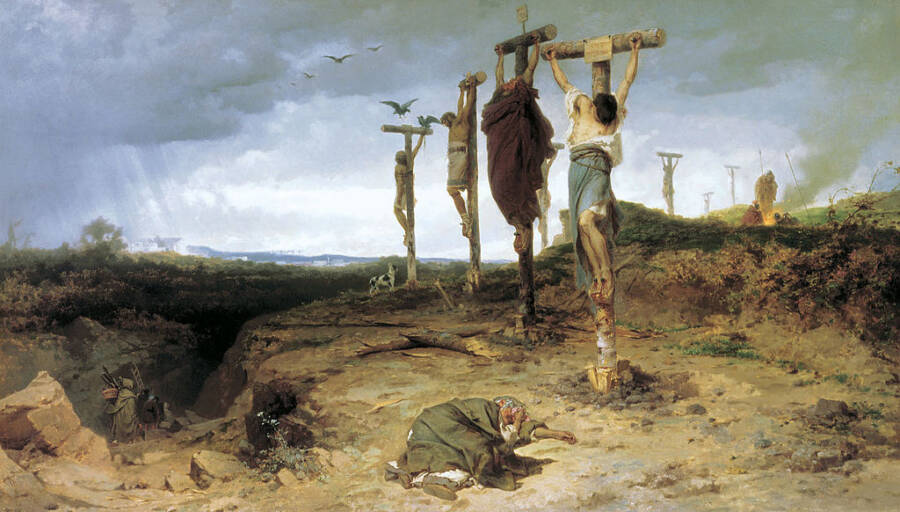
Wikimedia CommonsWhen Spartacus and his men were defeated, 6,000 of his followers were crucified and lined up between Capua and Rome as a deterrent to potential rebels.
Mummius was ordered not to engage in battle, but merely redirect the enemy and force them north. In his stubborn hubris, however, Mummius attacked — and was soundly defeated. Spartacus’s troops defeated them so badly that when Mummius’s men returned to their commander, punishment awaited.
Crassus ordered their decimation. This meant that the 5,000 men were split into 50 groups of 10, and essentially drew straws. Every unlucky tenth was killed.
Spartacus then switched gears and marched his men toward Sicily. He hoped to take over the island, where slaves had revolted in two different wars in the last 70 years.
He planned to escape to Sicily on a fleet of pirate ships, but the pirates sailed off with his gifts in tow before the rebels boarded the boats. So he stationed his men on the peninsula of Rhegium, in southern Italy, to plot his next move.
Appian, Plutarch, And The Penultimate Battle
Around here is where the two main authorities on Spartacus — Appian and Plutarch — diverge in their storytelling.
According to Appian, Crassus and the Romans walled the slaves in with ditches and dirt. When the slaves broke through the barriers, the Romans slaughtered nearly 12,000 of them, themselves only suffering three deaths.
With his remaining men, Spartacus “made sudden and repeated sorties” against the Romans. He even crucified a Roman prisoner, setting a terrifying example to his men of the fate in store for them if they were to lose.
Unsettled by the turn of events and hoping to avoid an embarrassing defeat, Rome sent the general Pompey to help Crassus. Fearing Pompey, who was a celebrated military strategist, Spartacus first tried to negotiate with Crassus. When his offer was refused, he made a risky move, charging toward Brundisium with Crassus in pursuit.
When he discovered another Roman army was blocking his path, he and his men did all they could do: turn around and battle Crassus head-on.
Plutarch’s version of events, meanwhile, presents things a bit differently. When Crassus’s army walled Spartacus in, the rebel slave didn’t mind at first. But then, when he grew short on supplies, he managed to get a third of his army over the earthen walls.
Crassus had previously written to Rome to ask for support from general Pompey in Hispania and Lucullus in Thrace, but now he was set on defeating the slaves on his own. He didn’t want the other generals to get all the credit.
And so he descended upon groups of rebels that had splintered from Spartacus, killing 12,300 of them. Spartacus took his own men up into the mountains, all the while being pursued by Crassus’s officers. When the slaves turned on the Romans with great success, they were filled with over-confidence.
According to Plutarch, “they refused any longer to avoid battle and would not even obey their officers.” But “this was precisely what Crassus most wanted them to do.” As the Romans dug a trench, the slaves jumped into it and engaged in bloody battle.
The (Assumed) Death Of Spartacus
Spartacus and his troops were fending off the Roman army as best they could, but it was all for naught. They were cornered and swiftly defeated. The rebellion, and the arduous attempt to travel back home, had come to an end.
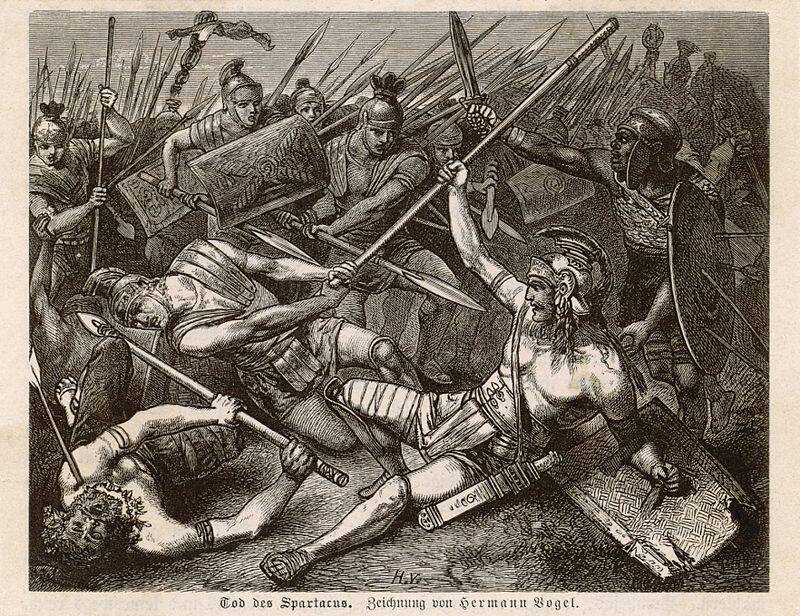
Wikimedia Commons“Der Tod Des Spartacus” (The Death Of Spartacus) by Hermann Vogel. 1881.
Spartacus was presumably killed — though his body was never found. Plutarch described the man’s final moments:
“First, when his horse was brought to him, he drew his sword and killed it, saying that the enemy had plenty of good horses which would be his if he won, and, if he lost, he would not need a horse at all. Then he made straight for Crassus himself, charging forward through the press of weapons and wounded men, and, though he did not reach Crassus, he cut down two centurions who fell on him together. Finally, after his companions had taken to flight, he stood alone, surrounded by his foes, and was still defending himself when he was cut down.”
More than 6,000 rebels captured after the defeat were crucified. In a common practice to deter citizens from rebellion, their crucified bodies were positioned along the Appian Way, stretching from Capua to Rome.
And though Crassus obliterated Spartacus and his followers, his glory was overshadowed by Pompey, who had returned from Spain in time to defeat 5,000 rebels. While both of them were elected as consuls in 70 B.C. for their efforts, a lifelong rift had torn them apart.
Spartacus and his slave revolt caused permanent ripple effects in ancient Rome. Julius Caesar, for instance, introduced a series of laws to prevent such uprisings once he became dictator.
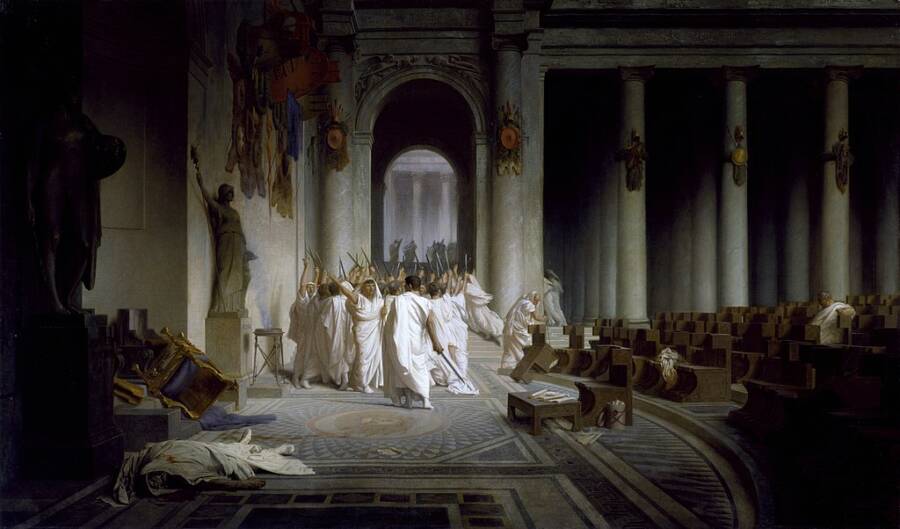
Wikimedia Commons“The Death Of Caesar” by Jean-Léon Gérôme. 1867.
Some historians see Spartacus as a selfish rebel who led his men to annihilation because of his overgrown ego, pillaging Italy in the process. Others disagree, and see him as an inspirational figure who led thousands of commoners against the oppressive Roman Empire and its subjugations.
In the end, Spartacus led the biggest slave revolt in ancient Rome — one that we remember to this day.
Hollywood Tackles Spartacus
In 1960, before Full Metal Jacket and The Shining, legendary Hollywood director Stanley Kubrick helmed Spartacus. The film won four Oscars and starred a who’s who of leading men, with Kirk Douglas in the titular role and Laurence Olivier as his arch-nemesis, Crassus.
The three-hour epic bends the facts of Spartacus’s life to fit its own hyper-dramatic plot. And while historians aren’t completely confident on all of the slave leader’s biography, since what we know about his life comes from contradictory histories penned decades after the Third Servile War, there are some things that the film most definitely gets wrong.
For starters, in the film, Spartacus was born into slavery, when by all accounts he was actually born free and later sold into slavery.
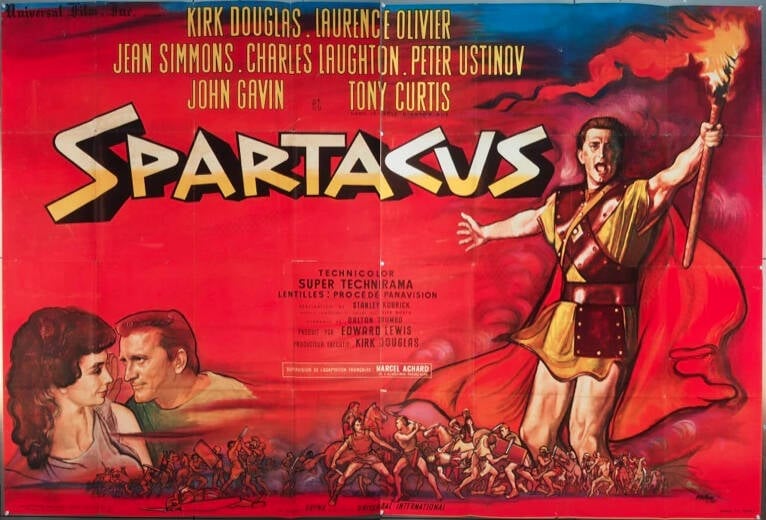
TwitterA movie poster for Stanley Kubrick’s 1960 epic Spartacus.
And, of course, as with any major Hollywood film produced in the old studio system, a love triangle was wedged into the plot. In the film, a slave girl named Varinia, played by Jean Simmons, is in love with Spartacus but bought by Crassus, giving the slave even more motivation to defeat his rival.
But there’s no documented evidence that Varinia existed; no ancient historian mentions anyone with that name while describing Spartacus’s life. Spartacus did have a wife, whose name we’ve never known and who was sold into slavery with him, but there’s not even a hint of proof that she was then purchased by any Roman general.
On the other hand, the film’s broader strokes are more on point. Spartacus trains as a gladiator in Capua, where he trains under Lentulus Batiatus, portrayed by Peter Ustinov. The slave rebellion, stemming from the gladiator school’s kitchen, also includes some accurate details.
Though in the film, Spartacus makes it his goal from the outset to flee on Sicilian pirate ships to his homeland. In reality, according to Appian and Plutarch, he initially aimed to journey by land up to the Alps, and then hike to Thrace from there. He only changed his plans after the Roman army blocked his way north.
The film — as with most modern retellings of the Spartacus story — also assumes that Spartacus’s motivation was completely noble. “We’ll free every slave in every town and village!” he screams in the early stages of his revolt.
But there’s no indication that Spartacus ever planned on a social revolution with an altruistic foundation; he didn’t necessarily want to free all the slaves in Rome or end the institution of slavery, he merely accepted anyone willing to fight for him to join and wanted to get home safely.
The recent Starz series, Spartacus: Blood and Sand, also takes some liberties with the main character’s biography. The beginning of the series centers around the rivalry between Spartacus and Claudius Glaber.
In the show, Glaber is the one who initially captures Spartacus and sells him into slavery as a gladiator. In reality, there’s no evidence that Spartacus and Glaber encountered each other at all until Glaber was sent to the Bay of Naples to quell the slave uprising.
In the end, both the film and the series have their qualities but serve more as historical documents of how the film and television industries portray heroes, rather than a biography of Spartacus’s actual life. For a better sense of Spartacus the man, Appian and Plutarch are the best things we’ve got. And it’s through their ancient writings that Spartacus’s slave rebellion lives on.
After learning about Spartacus, the gladiator who led a slave revolt, learn about Yasuke, the African slave who rose to become history’s first black samurai. Then, read about the Roman Empire at its height.





